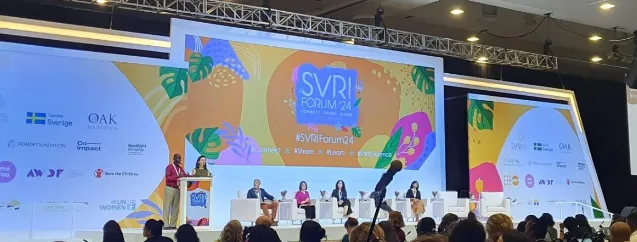Mid-Term Monitoring of Tiger Worm Toilets

I left the bleak European winter for my penultimate visit to Myanmar. The aim of this visit was to catch up with the Tiger Worm Toilet (TWT) Team and to carry out a review of the project results to date. I set-off to Sittwe, the capital of Rakine State on my second day.

Our efforts in Sittwe are three-fold: to try the worm based sanitation in a communal setting in an IDP camp, adding the worms to household toilets after they have been used for a month, and trying a new species of worm - Indian blue worm (Perionyx excavates).
On arrival, I was welcomed by Mee Mee Htun our intrepid engineer and Oo Shwe Than her new WASH assistant, who has been instrumental in monitoring the tiger worm toilets. After a brief catch up, I was slowly fed the vast amounts of data that have been collected since my last visit in March. I spent days and nights analysing this data. The project is at a critical point as the rainy season has just ended and this will have tested the robustness of the TWTs.
In the camp two designs of TWT are being tested. The first one has two toilets with approximately 22 users per toilet, which discharge into one large vault (a masonry rectangular block structure). This is the first ever communal TWT to be tested. In September at the end of the rainy season, half these vaults had lots of water in them, but the good news was that in October these vaults had recovered and contained worms and vermicompost.
In the second design at the camp, each toilet is connected to a separate concrete ring-shaped vault, again just under half contained liquid in September, but these vaults were filling at a faster rate than the other design. One vault has already been emptied. After investigation, it was found that the surface area and the depth of the concrete ring-shaped vaults were about half of the previous design – hence they are undersized.

In the relocation village, household TWTs are being trialled and the worms are added after the toilets have been in use for one month. The toilets were sized for the average number of users, which was five. Again, approximately half of those that had been monitored at the end of the rainy season contained lots of water and were filling quickly, with one system already needing to be emptied.
By comparing the different data sources, it is apparent that about half of these household TWTs are being over-used (by seven or more people per day), three had never had worms added (due to issues with the worm supply) and were constructed in areas where families told us that pits filled during the rainy season in their old latrines before the TWT. When the surface area was explored, and compared with the number of users, it was found that the user numbers vary significantly from two to nine, so some vaults had filled quicker than others. Hence our learning is to design for the maximum number of users in community rather than the average.
TWT comparing favourably to current sanitation options
Although these results seem rather mixed, it is important to understand we are trialling different designs and we have learnt a lot about designing this kind of system. Even with these results the TWT compares favourably to the current systems in terms of filling and emptying, and the user experience. The control latrines at the camp setting have been emptied between two to four times since the TWTs have been built, whereas only one of the TWT vaults has been emptied once. In the village, one control latrine has been emptied once.
Mid-Term Review Workshop

There is no point collecting and analysing our data if we do not share it with others, so a Mid Term Review Workshop was held in November. Attendees from the WASH community included international and national NGOs, staff and students from the Technological University and Technological High School, representatives from the Rakhine State Government, and TWT users from the village. We were overwhelmed by responses as the news of our worm toilets had spread in the region and over 50 people came to our workshop.
We explained why we are trialing these unique toilets, what we have done, our results and conclusions to date. As most of the audience were local all presentations were translated simultaneously into the local language. The stars of the day were Mee Mee and Aye Yin who did the translation, as well as presenting their technical experiences.
The workshop participants were keen and interested to try out TWTs themselves. Sadly, we had to dampen their spirits by reiterating this is very much a research initiative in its infancy with a focus on monitoring TWT use over a longer period.
Watch this space as we collect and analyse more data over the forthcoming months.
Written by Dr Claire Furlong, project partner and lecturer in sanitation at the IHE Delft Institute for Water Education, Netherlands.
Stay updated
Sign up for our newsletter to receive regular updates on resources, news, and insights like this. Don’t miss out on important information that can help you stay informed and engaged.
Related articles



Explore Elrha
Learn more about our mission, the organisations we support, and the resources we provide to drive research and innovation in humanitarian response.